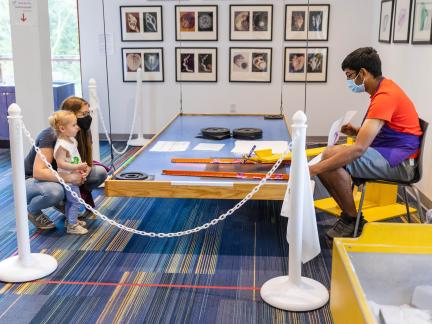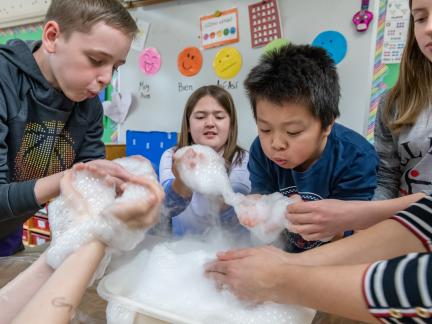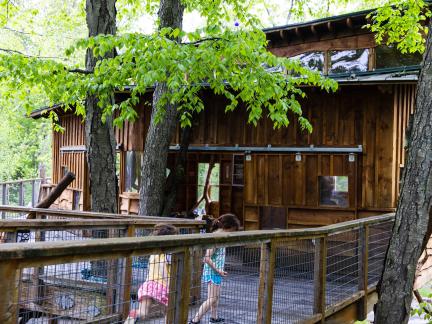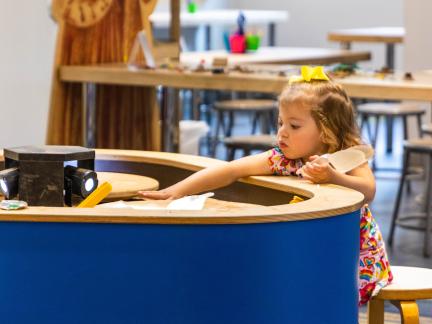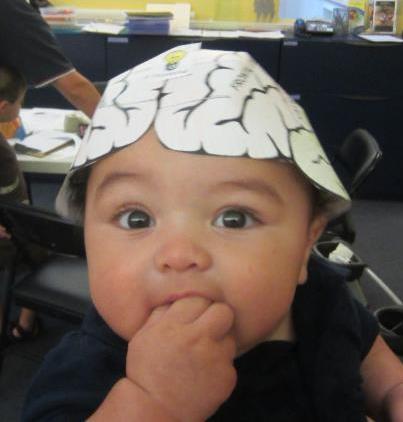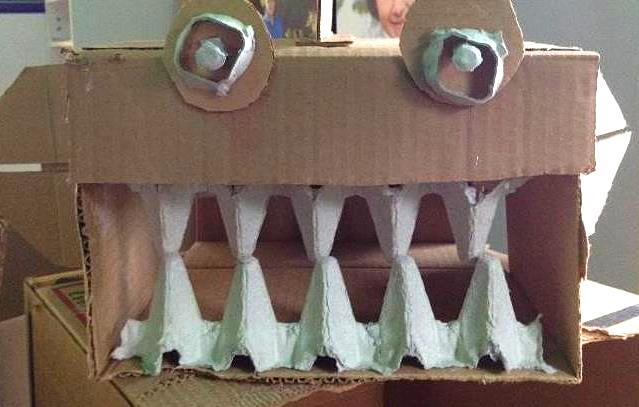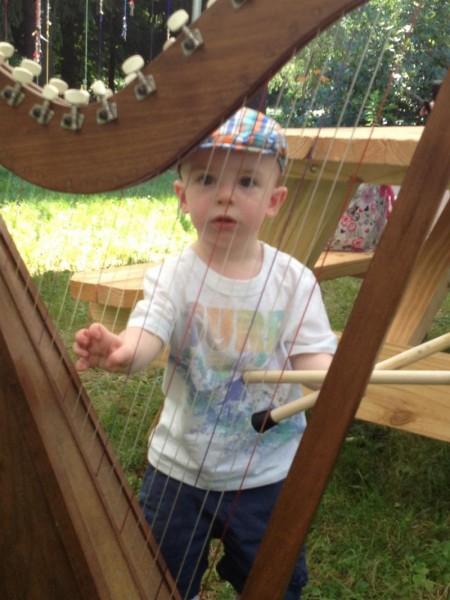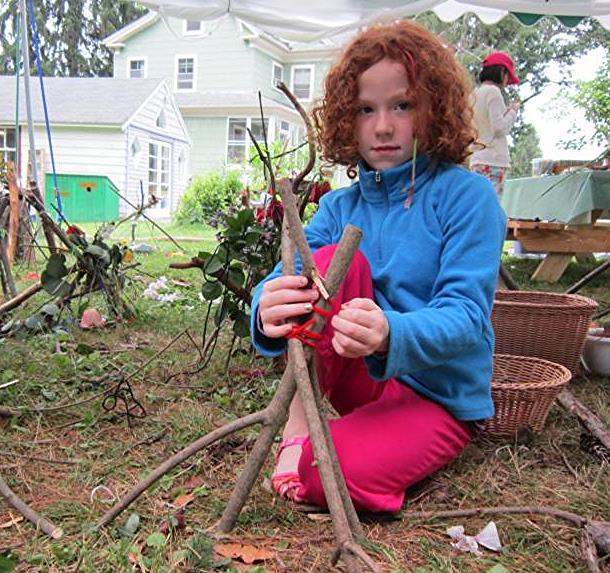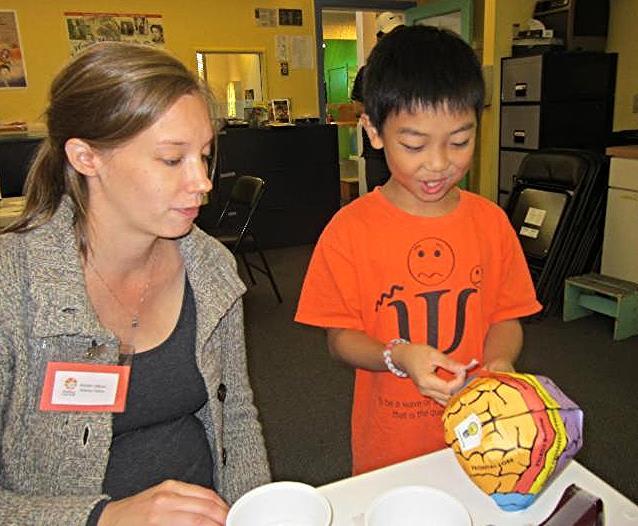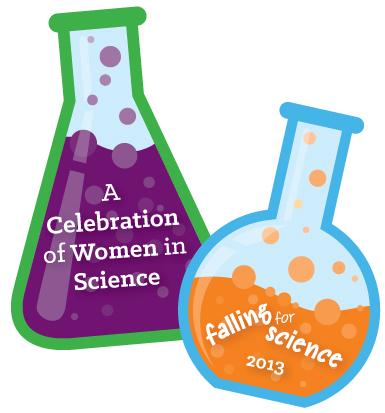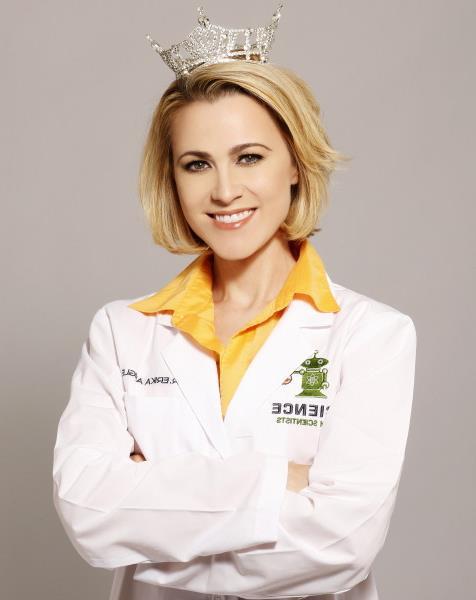Update from our CEO October 7, 2013
Dear Friends of the Museums,
Your first memory of "doing science" might be the formaldehyde-scented worm or frog dissections you did in high school biology. And art was a break from your "real" classes that wasn't connected to anything else.
Some of the latest work at The Discovery Museums turns the educational approaches that created those memories on their heads, focusing on science learning for pre-schoolers and consciously integrating art into our science efforts. Why?
Research shows that the brain develops most rapidly between birth and age five, and is particularly receptive to learning math and logic between the ages of one and four. Early childhood is the key time to engage children in the sciences, when they do what comes naturally: question and explore, experiment and discover---the very foundations both of early learning and, interestingly, the scientific method.
Similarly, art is foundational for children: self-expression, problem-solving, collaboration, focus, confidence, accountability--essential life skills are practiced and learned. Integrating art into science encourages the sort of innovative thinking that is essential to discovery and problem-solving.
Unfortunately, many educators, childcare providers, and parents are uncomfortable encouraging STEAM (Science, Technology, Engineering, Art, and Math) thinking in young children due to their own lack of familiarity, making them unable to provide the rich, hands-on learning environment that best encourages and develops young children.
The Discovery Museums' thirty years of experience introducing young children to science through play makes us uniquely suited to provide the essential enrichment and scientific inspiration children deserve in their early years. We can provide that initial spark preschoolers need to get their minds and imaginations going, increasing their chances of academic and professional successes later in life.
So, what exactly are we doing for younger kids?
Our new Pre-K STEAM: Make a MESS (Math, Engineering, Science, and Stuff) program series, generously supported by the Ramsey-McCluskey Family Foundation, provides a series of hands-on workshops related to science, technology, engineering, art, and math for pre-K students, their families, and teachers. Here are some things that have delighted our visitors so far:
Under the Cardboardian Sea was an immersive, open-ended, participatory, and emergent program that created a transformative "under sea" space made entirely of cardboard.
Maker Music celebrated the creator and the musician in all of us. Pots and pans were used as cymbals and drums; tree stumps became percussion sections; household items were used to make music in creative ways; and a "petting zoo" of real instruments was curated by experts.
In the Free Form Forest of Fairyborough, families were challenged to stretch their creativity by building an entire town of homes and businesses out of natural materials. Children built a post office (and mailed real postcards), public library (creating books about fairies, trees, sea monsters, and more), and even added a farm for food.
We also took the idea on the road and helped others become comfortable doing science with pre-schoolers. The Lowell Community Pre-K STEAM Fair was held at UMass Lowell in August with approximately 45 presenters, mostly immigrant women who provide child care in a diverse language community. We provided professional development and educational resources to enhance the quality of their daycare curricula, culminating in a first-of-its-kind science fair for preschoolers.
In June we opened AirPlay, our newest exhibit, funded by the Institute for Museum & Library Services (IMLS), and MEFA's U.Fund and Fidelity Investments. Young children use all of their senses to experience the phenomena of moving air and test ways in which the power of moving air impacts common objects. Science definitely meets art with the magical Shimmery Wall, where moving air creates sparkling and ever-changing patterns!
What about for older children, you might ask?
For older kids, we have seen the power that the right kind of programs and face-to-face interactions with science professionals can have. The scientists' stories combined with hands-on activities that relate to their research or careers can inspire our young visitors in memorable ways.
To help local science professionals develop the skills to make their work accessible to the public, we have tapped into the expertise, insights, and best professional development practices of the Portal to the Public network--and we are the only museum in New England to do so. We offer area scientists and professionals a series of workshops aimed at promoting a better appreciation and understanding of science, technology, engineering, and math. Scientists learn how to talk about their work with the public in an interactive setting, and how to develop hands-on activities that help bring it to life. The workshops culminate in our new Meet the Scientists! program, where kids discover why these professionals find science cool and exciting and learn about their research and interests in chemistry, biology, physics, and more. Although this event has just passed, I think the lineup is worth sharing:
Laura Proctor, MathWorks - performed numeric sorting to determine patterns that would be helpful in sorting hundreds of numbers, similar to how a computer might apply an algorithm, or pattern, to finish a task.
Professor Melissa Kosinski-Collins, Brandeis University - showed how scientists tag molecules in a cell using fluorescent markers. Participants "searched" for hidden items in a cell model.
Dr. Sarah Sundelacruz, Tufts University - explored how scientists grow tissues to help our bodies heal.
Dr. Jocelyn LeBlanc, Boston Children's Hospital and Harvard Medical School - showed how the brain is the most remarkable part of the human body through "tricks" demonstrating the amazing ways the brain can adapt.
Dr. Dimitra Pouli, Tufts University - demonstrated the multifaceted nature of light.
Dr. Mathangi Krishnamurthy, Fitchburg State University - led an activity showing how we can affect the speed/rate of chemical reactions, particularly decomposition, by using chemical substances called catalysts.
Suanna Selby Crowley, PhD, RPA, Boston College - led several activities exploring textures, components, and facts about archaeological soils and sediments and how they help tell the story of ancient sites.
Dr. Casey Wade, Brandeis University - explored the relationship between chemistry and electricity.
I'm sorry if you and yours missed this terrific lineup, but the good news is that the next Portal to the Public session for scientists will begin in February. Watch our calendar for the next Meet the Scientist public program in the spring!
Each year we have a chance to celebrate with many of you at our Falling for Science gala. This year we've brought a special focus
to the event: celebrating the achievements of women in science. Proceeds will support our SMART Gals series: special programs focused on helping girls see themselves as great science learners. Our host this year, Dr. Erika Ebbel Angle, is a successful MIT-trained science entrepreneur and advocate for science learning, as well as a former Miss Massachusetts. Please join us on October 26 for a great, fun, and meaningful party! Spoiler alert: we also plan to make some important announcements about our future that night!
I love getting your thoughts and feedback on what we are doing--and what you wish we were doing. Let me know what you're thinking at ngordon [at] discoverymuseums.org.
All the best,
Neil H. Gordon
Chief Executive Officer
